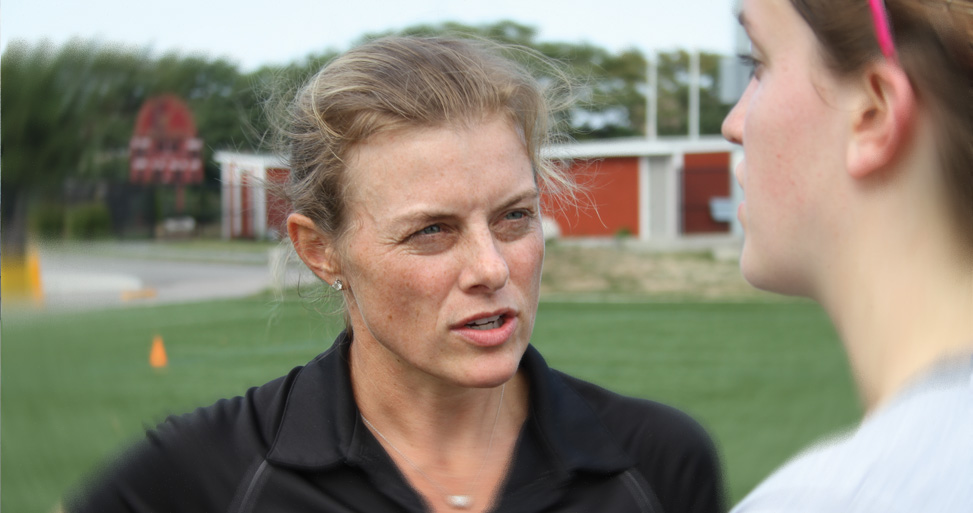
Back from a very good week directing at Point Guard College in Denton, TX. There were a total of 121 athletes who worked with our team of basketball coaches. We made some good modifications to the format and delivery and I was pleased with the progress made in how things are being taught at PGC. It was a fun week and the feedback was very positive.
I have to admit that I typically walk away from training sessions feeling that I’ve learned more from the athletes than what they had learned from me. This group was no different.
Here are a couple “reminders” that the athletes gifted me with…
The Student Will Tell You When They’ve Learned Something
The best way to know is to ask: “What’s the purpose of this activity?” “What was the one thing I asked you to focus on?” “How does this help you become a better basketball player?” “Show me.” Also, a lot of realization and understanding comes in some form of “Aha!” moment. Depending on how demonstrative a kid is, it’ll be quite obvious with some kids and not quite so obvious with others. That doesn’t mean they don’t get it, but could just mean that they’re still working through it; or just don’t give off much by way of body language.
In a short period of time, it’s difficult to make wholesale changes to muscle memory to the point where a new skill is a refined part of their skill set. Instead, the goal is create awareness in that athlete of what the skill or concept, let’s say, looks and feels like. So, that when they leave, they have the capacity to train that skill on their own, or recognize a concept when it occurs again.
Go Beyond ‘Teaching To The Test’
The catch in a compressed 1-week basketball “camp” format is that the tendency is to just want to get through your stuff. (Admittedly, to an extent, you do have to do some of that.) Mike MacKay used the phrase “teaching to the test” with me a few weeks back when describing what happens in schools when teachers just go through their curriculum just to get it all in before the exam. When the students fail to perform on the test, then they’ll dismiss the failings in their methodology by saying “Well, I don’t know why they didn’t do well with that because I taught them that.”
The same thing happens in basketball when a coach is intent on getting all their stuff in before the game (e.g. press break, out of bounds, their sets, etc.) then the athletes don’t pass the test (i.e. perform) those same skills in the game.
Layer Your Progressions To Maximize Learning
One of the things that I picked up in my new hidden passion, yoga, is the notion of levels (or layers). For instance, my yoga instructor will say “let’s move slowly in to pigeon pose … ‘put your body in a twisted position, that’s Level 1’ … ‘or, you can get into a really overly twisted position, that’s Level 2’ … ‘human pretzel, that’s Level 3.’
The benefit to this approach is threefold:
- Both the athlete and coach get to make assessments and have discussions about what needs to be worked on
- The entire group can feel as if they’re making progress forward relative to where they started at the beginning of the week
- You as the ‘pack leader’ get to assess the eyes of the coaches working with you
As a coach, you still get through all your ‘stuff,’ but one athlete could be moving from Level 1 to Level 2, whereas another is moving from Level 2 to Level 3. The key is, as a coach, to learn how to load drills and create progressions within the same activity.
Teach (Speak) Using All The Senses
See it, hear it, touch it, smell it, and taste it. This is not a novel thought, but it’s an underutilized approach.
Start by asking questions of your athletes:
- “What did you see?”
- “How did your body feel when you performed that move?”
Also, physically put them in the new position to bring and awareness to the sensation; and even, have them go through a movement pattern in slow motion. Or, give your athletes actual physical resistance as they move through a movement pattern so they can know what it feels like. Give them a start and end position. Show video. Diagram drills. Have them diagram drills. Let them define and describe the movement using their own words (e.g. “What names or descriptors would you give to this action?”) … etc.
Have some fun with it. Experiment. Coach creatively!
/sef.